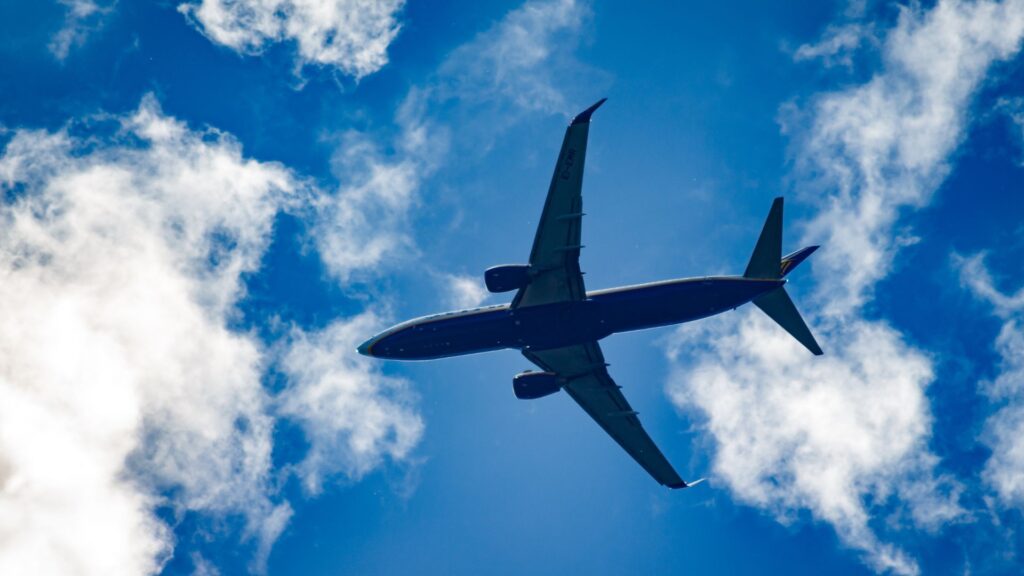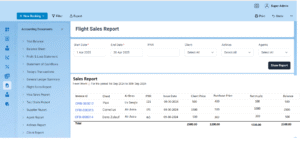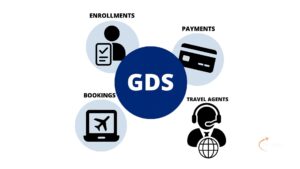Flight Reservation Systems: A Complete Guide

Inside the Flight Reservation Systems: From Search to Ticketing Explained
Booking a flight today is a fast, seamless experience for travelers. Still, behind the scenes, it involves a sophisticated ecosystem of technologies and workflows. From the moment a passenger searches for a flight until they collect their baggage at their destination, numerous systems and stakeholders collaborate to make flight booking efficient and reliable.
This comprehensive guide breaks down the flight booking process, detailing its core structure, step-by-step flow, and vital systems such as flight reservation systems, global distribution systems (GDS), flight aggregators, and travel agency booking systems. Whether you are part of the travel industry, a technology provider like IV Trip, or just curious about how booking works, this article explains everything you need to know with up-to-date insights and practical context.
What Are Flight Reservation Systems?
A flight reservation system is the foundational software used to manage flight inventory, pricing, booking requests, and ticketing. It serves as the central platform enabling airlines and travel agencies to store schedules, fares, seats, passenger data, and generate electronic tickets.
Core Functions of Flight Reservation Systems:
- Real-time flight availability and schedule management
- Booking and fare rule processing
- Passenger Name Record (PNR) creation and management
- Electronic Ticket (e-ticket) issuance
- Ancillary services, such as seat upgrades or baggage
Many airlines operate their own reservation systems or use centralized Passenger Service Systems (PSS), which bundle components like the Central Reservation System (CRS), Inventory Control System (ICS), and Departure Control System (DCS). IV Trip’s advanced travel agency booking software integrates seamlessly with these reservation systems, empowering agents with real-time access and streamlined booking workflows.
Explore IV Trip’s solutions for travel agencies here: travel agency software.

Understanding the Flight Booking Process: Key Steps
Booking a flight might look simple from a user’s perspective, but behind every click is a complex ecosystem of flight reservation systems, databases, and real-time communications ensuring accuracy, security, and coordination across airlines, travel agencies, and global networks.
Step 1: Flight Search
The process begins when travelers enter their trip details—origin, destination, travel dates, passenger count, and sometimes cabin class—on an airline’s website, an online travel agency (OTA), or a metasearch platform like Skyscanner or Google Flights.
These platforms connect to multiple back-end flight reservation systems, such as:
- Airline Central Reservation Systems (CRS): The core flight reservation systems that store flight schedules, inventory, and fare rules.
- Global Distribution Systems (GDS): Large networks like Amadeus, Saber, and Travelport that aggregate flight data from multiple airlines for agencies and OTAs.
- Aggregators or APIs: Interfaces that connect OTAs or corporate booking tools to several flight reservation systems for broader availability and price options.
Within seconds, the system runs fare and availability queries, applies pricing logic, and returns a list of available flights ranked by factors like price, duration, and connections.
Step 2: Flight Selection and Booking
Once the traveler chooses a suitable option, the flight reservation system validates seat availability in real-time. If available, a Passenger Name Record (PNR) is created.
A PNR is essentially the digital “file” for a booking—it includes passenger details, flight data, fare class, and special requests.
The PNR is stored simultaneously in:
- The airline’s CRS or flight reservation system,
- The GDS (if booked via an OTA or travel agent),
- And sometimes a Travel Management System (TMS) for corporate bookings.
This ensures synchronization across all flight reservation systems, allowing travelers, airlines, and agents to access consistent and up-to-date reservation details.
Step 3: Ancillary Services Booking
At this point, travelers can personalize their trip by adding ancillary services such as seat upgrades, baggage allowance, in-flight meals, or Wi-Fi.
Each of these services is recorded using Special Service Request (SSR) or Optional Services (EMD-S) codes tied to the PNR.
Airlines use integrated flight reservation systems to manage and sell these ancillaries efficiently. Passengers can add them:
- During the initial booking, or
- Later, through “Manage My Booking” options or airline mobile apps.
The system updates the PNR automatically and recalculates the total fare.
Step 4: Payment Processing
After confirming the selection, the system transitions to the payment stage. Payment handling varies depending on the booking source:
- Direct Airline Website: Payments go through a secure gateway connected to the airline’s flight reservation system.
- OTAs or Agents: Payments are routed through the IATA Billing and Settlement Plan (BSP) or Airline Reporting Corporation (ARC) for reconciliation between travel agents and airlines.
The payment gateway runs fraud checks, authorization, and transaction validation before approving payment. Once successful, the booking status updates from “Reserved” to “Confirmed,” allowing the ticket to be issued.
Step 5: Ticketing
Ticketing is the official confirmation that a paid booking now holds a confirmed seat. The flight reservation system issues an electronic ticket (e-ticket) linked directly to the PNR. Each e-ticket contains:
- Passenger and flight details
- Fare calculation and taxes
- Ticket number and issuance date
Ticketing can occur instantly after payment or be queued for review in complex itineraries or interline bookings involving multiple flight reservation systems. Coordination through GDS ensures all carriers in a multi-airline journey recognize the same ticket details.
Step 6: Check-In and Boarding
Check-in usually opens 24 to 48 hours before departure. The airline’s Departure Control System (DCS) takes over, managing passenger identity verification, seat assignment, and boarding pass generation.
Travelers can check in online, at airport kiosks, or at staffed counters. As passengers move through the process, the DCS updates the PNR status within the flight reservation system—from “checked-in” to “boarded.”
This same system connects to baggage handling systems, ensuring that each checked bag is tagged, tracked, and routed correctly.
Step 7: Baggage Handling and Reclaim
Each checked bag gets a barcode or RFID tag linked to the traveler’s PNR in the flight reservation system. Airport baggage handling systems and airline DCS track the bag’s path from check-in to aircraft loading.
At the destination, the DCS marks the luggage as “arrived.” Passengers then reclaim their bags at designated carousels. If any issue arises, the data stored in the flight reservation systems helps trace and recover the baggage quickly and accurately.

The Role of Global Distribution Systems (GDS) in Flight Booking
A Global Distribution System (GDS) acts as a bridge between airlines and travel agencies or flight aggregators, providing access to airline inventories and fare details globally.
How GDS Works:
- Aggregates airline schedules and seat availability
- Enables travel agencies to compare and book flights in real time
- Supports additional services such as hotel and car rentals
- Major GDS providers include Amadeus, Sabre, and Travelport.
Why GDS Is Vital for Travel Agencies:
- Offers comprehensive flight options across carriers
- Ensures accurate, up-to-date information and pricing
- Enables seamless multi-carrier itineraries
To understand GDS is vital for travel Agencies; explore Iv Trip’s insights on the global distribution system.
Understanding Flight Aggregators and Their Advantages
Flight aggregators like Kayak and Skyscanner play a pivotal role in flight booking by aggregating data from airlines, GDSs, and travel agencies.
Benefits of Using Flight Aggregators:
- Wide range of options in one search
- Price comparison across multiple channels
- User-friendly interfaces for consumers
Flight aggregators rely heavily on flight reservation systems and GDS integration to provide accurate search results.

Modernizing Booking with New Distribution Capability (NDC)
The IATA NDC standard revolutionizes flight booking by replacing legacy EDIFACT messaging with XML-based APIs. This allows:
- Airlines to offer personalized ancillaries and bundles directly via travel agencies and OTAs,
- Clearer communication of rich content like special meals, baggage options,
- Alternative payment methods beyond BSP/ARC.
NDC workflows include:
- NDC Shopping: Requesting flight offers via API,
- NDC Ordering: Managing orders with flexible pricing and modifications,
- NDC Payment: Finalizing transactions with diverse payment options.
NDC adoption improves customer experience and revenue potential, making it a strategic focus for technology providers like IV Trip.
Ancillary Services and Frequent Flyer Integration
Ancillaries like extra baggage, seat upgrades, or in-flight meals are booked using SSR codes (e.g., EXST for extra seat, PETC for pet in cabin). These services boost airline revenue and enhance traveler satisfaction.
Loyal travelers often redeem frequent flyer miles or points during booking. CRS reserve inventory slots specifically for these programs, integrating loyalty data into PNRs.
Important Systems Summary
System Name Description Role in Flight Booking
- Passenger Service System (PSS) Suite, including CRS, ICS, and DCS, for managing reservations, inventory, and departures. Backbone of airline customer interaction
- The Central Reservation System (CRS) Database manages schedules, fares, PNRs, and e-tickets. Core booking data management
- Passenger Name Record (PNR) Digital booking file with passenger info and itineraries Reference ID for bookings and changes
- Global Distribution System (GDS) Network aggregating airline content and distributing to agents and platforms. Connects airlines with travel agencies.
- New Distribution Capability (NDC) XML API standard for richer airline-offer distribution. Modernizes content and payment flows.
- Departure Control System (DCS) handles check-in, boarding, and baggage processing . Operational control at airport
Best Practices for Optimizing Flight Booking Systems
For travel agencies and software developers, optimizing the flight booking process can significantly boost efficiency and customer satisfaction.
Recommendations:
- Implement user-friendly interfaces for travel agents with intuitive workflows.
- Automate post-booking management, such as cancellations and refunds.
- Maintain real-time synchronization with GDS to avoid discrepancies.
- Utilize analytics for booking trends and pricing strategies.
- Ensure platform mobile compatibility and fast loading times for better accessibility.

Frequently Asked Questions (FAQ)
- What is a flight reservation system?
It is a software platform managing flight schedules, availability, passenger bookings, and e-ticket issuance. - How does a global distribution system work?
GDS aggregates airline data and distributes it to travel agencies and OTAs for booking access. - What is the Passenger Name Record (PNR)?
A PNR is a unique booking file containing passenger details and itinerary. - What role does New Distribution Capability (NDC) play?
NDC provides modern XML-based APIs for airlines to offer rich content and flexible payments via travel partners. - How are ancillaries managed in the booking process?
Ancillaries like extra baggage are added to bookings using SSR codes integrated into the PNR. - What is the difference between booking and ticketing?
Booking reserves a seat; ticketing finalizes payment and issues the right to board. - How does payment differ in direct vs. OTA bookings?
Direct airline payments use their own gateways; OTA bookings often settle via BSP or ARC clearinghouses. - What is a flight aggregator?
A platform that compiles flight offers from multiple sources to help travelers compare options. - Can frequent flyer miles be used in flight booking systems?
Yes, frequent flyer programs integrate with CRS to allow miles redemption. - How is baggage handled after booking?
Baggage is tagged and tracked by barcode, linked to the PNR in the airline’s Departure Control System.
Elevate your travel agency’s booking efficiency with IV Trip’s cutting-edge flight reservation systems and GDS integration. Explore our travel agency booking system to provide seamless flight booking experiences to your customers. Stay ahead by subscribing to the IV Trip blog for the latest travel tech insights and updates!
Contact IV Trip today for personalized demos and consultation.

